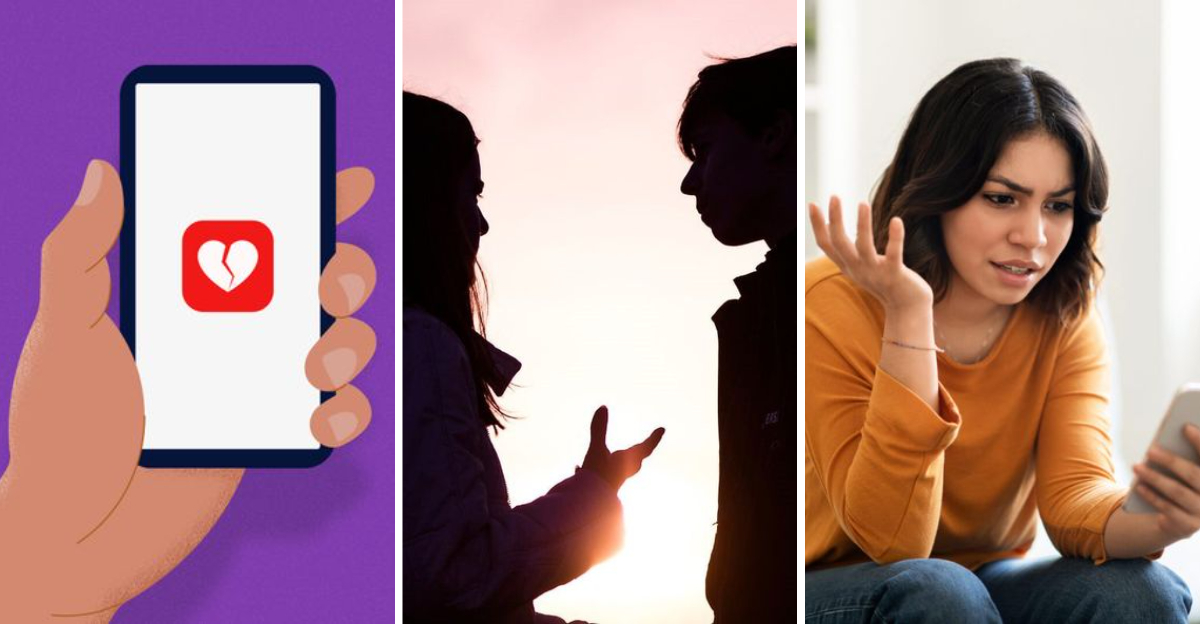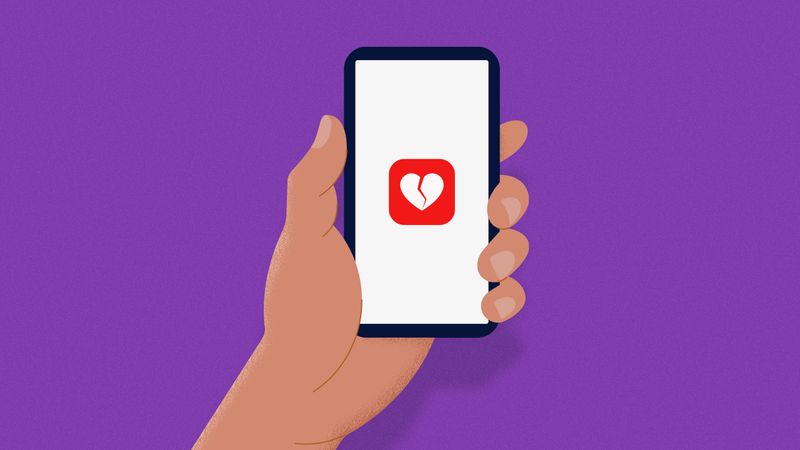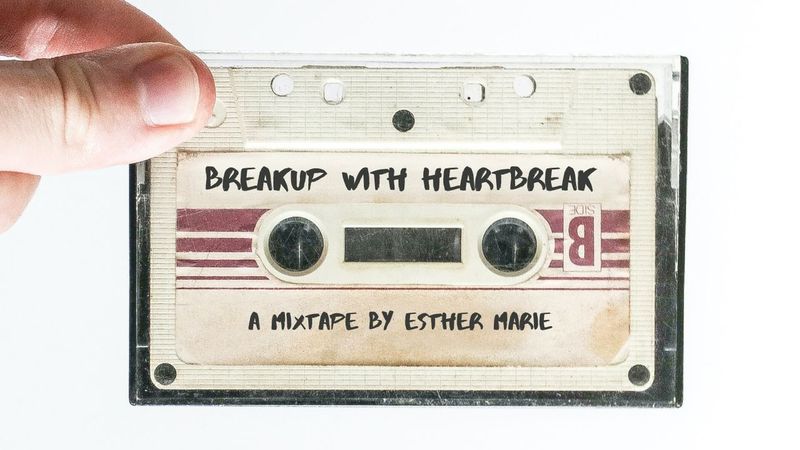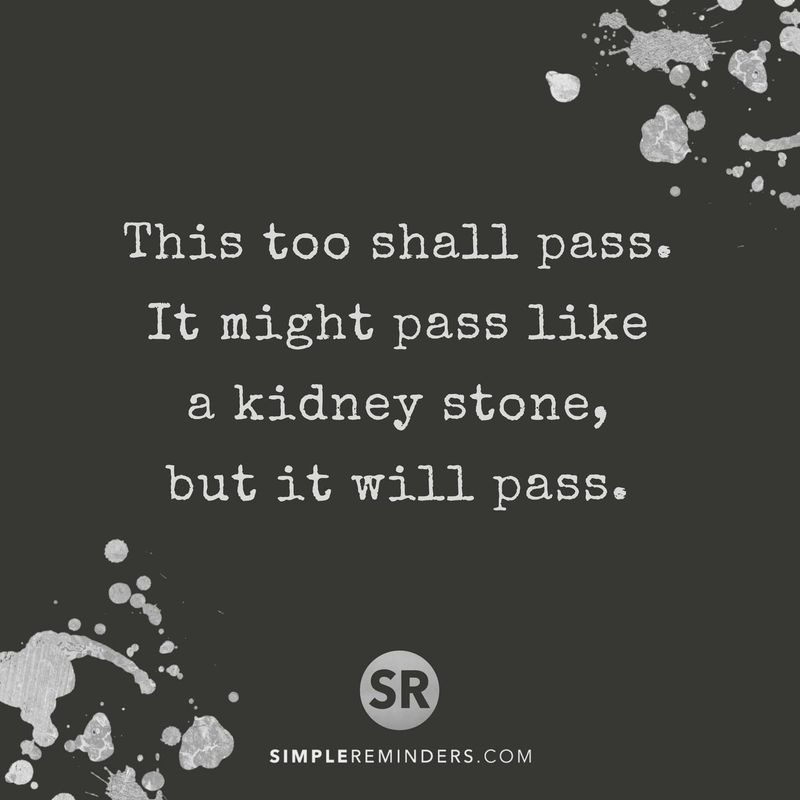The way people handle breakups has significantly evolved over the decades. In the ’70s, breakups were more private and less documented, while today’s digital era has transformed the way relationships end. This post explores nine distinct differences in how breakups were managed in the 1970s compared to the present day.
Private Letters vs. Text Messages
In the 1970s, a breakup often unfolded through a heartfelt handwritten letter, where emotions were poured out onto paper. Writing a letter allowed for reflection, giving the sender time to process feelings before sending it off.
Today, the breakup text message is a quick, albeit impersonal, method. It allows for immediate communication but lacks the depth of a handwritten note. This shift highlights how technology has changed interpersonal dynamics, making communications faster yet sometimes more detached.
While letters took days to deliver, a text arrives instantly, changing the pace of emotional exchanges.
Face-to-Face Closure vs. Social Media Unfriending
In the ’70s, seeking closure often meant meeting in person for a deep conversation, a chance to express feelings face-to-face. This practice encouraged genuine emotional exchange and resolution.
Today, closure can be as simple as a click: unfriending or blocking on social media. This digital version of closure offers convenience but can leave emotions unresolved.
While face-to-face meetings facilitated understanding, social media actions can lead to abrupt endings without the chance for meaningful dialogue. The change reflects a broader trend towards convenience over connection.
Support from Friends vs. Online Forums
Back in the ’70s, friends were the go-to support network. Gathering for an evening of conversations, they provided emotional support and advice. These gatherings were intimate and personal, fostering strong bonds.
Nowadays, online forums and social media groups have become sources of support. People share their breakup stories and receive advice from strangers with similar experiences.
While online communities offer diverse perspectives, they often lack the personal connection of a close-knit group of friends. This evolution shows how support systems have expanded into the digital realm, offering anonymity but less intimacy.
Diary Entries vs. Blog Posts
In the 1970s, people often turned to diary entries to process their breakup emotions. Writing in a diary was a private act, offering a safe space to express feelings without judgment.
Today, blog posts serve a similar purpose, but with a twist of sharing personal stories with the world. Writing publicly can be cathartic and allows for virtual support and feedback.
While diaries kept emotions hidden, blogs invite commentary and shared experiences. This shift highlights a move from private to public sharing, reflecting how the internet has changed personal storytelling.
Rebound Relationships vs. Dating Apps
In the ’70s, finding a rebound was often about meeting someone at a disco or through mutual friends, a natural and social process. These encounters were organic, leading to spontaneous connections.
Today, dating apps have streamlined the rebound process, offering instant access to a pool of potential partners. Swiping through profiles makes meeting new people quick and efficient.
While discos provided a lively atmosphere for rebounds, dating apps focus on convenience and speed. This change reflects a broader shift towards digital interaction, where technology facilitates new connections instantly.
Mix Tapes vs. Playlist Sharing
In the 1970s, making a mix tape was a deeply personal gesture, a collection of songs that conveyed emotions and memories. Crafting a mix tape required time and thought, making it a cherished keepsake.
Today, sharing a playlist is a digital equivalent, offering a curated music experience with a click. Though convenient, playlists lack the tactile and nostalgic value of a mix tape.
While mix tapes were tangible tokens of affection, playlists represent the modern way of sharing emotions through music. This transition highlights the impact of digital technology on personal expression.
Therapist Sessions vs. Self-Help Apps
In the ’70s, people often sought therapy to navigate the emotional turmoil of breakups. Therapy sessions offered a safe space for introspection and professional guidance.
Today, self-help apps provide an accessible alternative, offering exercises and advice at the user’s convenience. These apps cater to those who prefer self-guided healing.
While traditional therapy provides personal interaction and tailored support, self-help apps offer flexibility and privacy. This transition highlights a shift towards digital solutions for emotional well-being, where technology offers new pathways for healing.
Personal Reflection vs. Memes and Quotes
In the 1970s, personal reflection was a key part of healing after a breakup. Journaling and introspection allowed individuals to process their emotions privately and at their own pace.
Today, people often turn to memes and inspirational quotes on social media for comfort and relatability. These digital snippets provide quick emotional boosts and shared understanding.
While personal reflection offered deep self-awareness, memes and quotes offer shared experiences in a fast-paced world. This shift illustrates how digital content has become a tool for emotional connection and expression.
Rekindling in Person vs. Ghosting
In the ’70s, rekindling a relationship often involved meeting face-to-face to discuss feelings and unresolved issues. This direct approach allowed for honest communication and potential reconciliation.
Today, ghosting has become a common practice, where one person abruptly cuts off all communication without explanation. This leaves the other person in the dark, often leading to confusion and hurt.
While rekindling offered a chance for closure, ghosting reflects a modern trend of avoidance. This change highlights the impact of digital communication on personal relationships, where disappearing is as easy as not replying.









